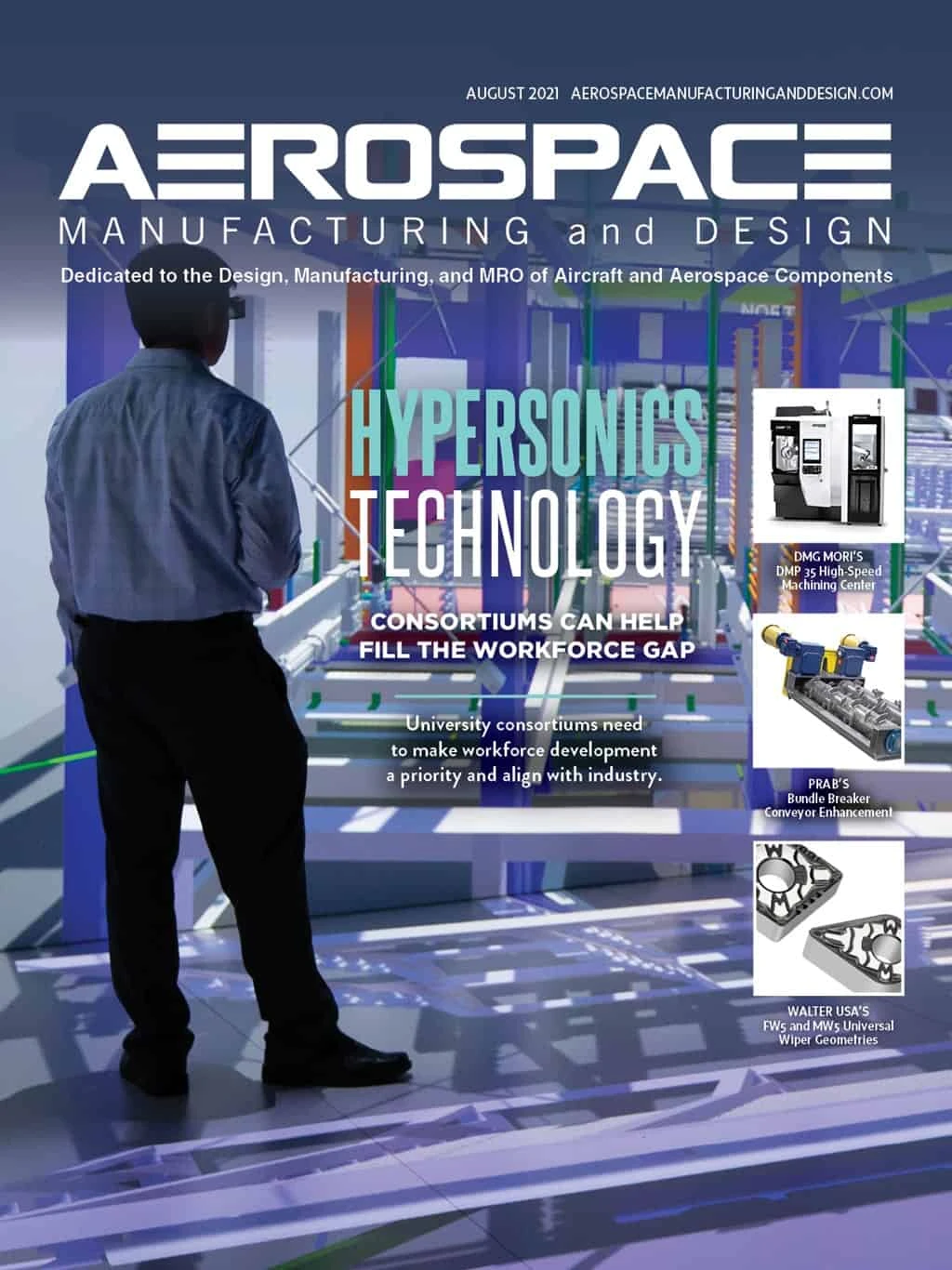
The development of hypersonic flight systems, though around for decades, is now a top defense priority in the United States, bringing the field into a rapid state of growth and change. Being a unique, multi-disciplinary field, the challenge is sourcing experts who possess the necessary skill sets to promote its growth. However, when there aren’t enough experts, it creates innovation gaps, such as keeping design for manufacturability (DFM) top-of-mind at the R&D stage, translating to manufacturing gaps later on when it’s too late to make cost-efficient changes.
Consortiums, such as the newly established University Consortium for Applied Hypersonics (UCAH), provide an important setting for cultivating the talent needed to advance the field. Students can collaborate directly with university researchers and industry professionals to develop technologies and advance crucial hypersonics research.
While UCAH and other defense consortiums empower members to pursue engineering efforts of many kinds, more must be done to establish diverse and experienced talent, from design to material development and selection to the manufacturing floor.
To provide even longer-lasting value to the field, university consortiums must make workforce development a priority by aligning with industry needs, engaging members in industry-applicable research, and investing in the initiative.
A workforce beyond engineering
The existing engineering and manufacturing workforce skill gaps are a top challenge when it comes to translating hypersonics technologies into at-scale manufacturable projects. If early-stage research isn’t carried across the aptly named valley of death – the gap between R&D and manufacturing where many ambitious projects are lost – then we lose out on fieldable, workable solutions.
U.S. manufacturing can ramp up for hypersonics, but the risk of falling behind is in scaling the workforce to match, so government and university-developed consortiums must work in tandem with the manufacturers to bring these programs to life.
Industry has experienced skills gaps from the manufacturing floor to engineering labs – and those will only widen as the hypersonics market grows. An emerging technology requires an emerging workforce to expand knowledge of the field.
Expertise is crucial
Hypersonic work spans several diverse focus areas for various materials and structures, each with its own set of technical challenges. They require a high level of detailed knowledge, which can create development and production roadblocks if the needed expertise isn’t there. It’ll be impossible to keep up with the demand for high-rate production if we don’t have enough people to sustain the effort.
For instance, we need people who can build the end product. UCAH and other consortiums are critical to promoting modern manufacturing and ensuring students interested in manufacturing roles are included. With dedicated workforce development efforts that span across functions, industry will be able to maintain a competitive advantage within hypersonic flight programs for years to come.
By establishing UCAH, the Department of Defense is creating an opportunity to bring a more focused approach to building capabilities in the field. It’ll be important for all consortium members to work together to train students on the niche capabilities so we can build and maintain the research’s momentum and extend it to producing the results our nation requires.
Public-private partnerships
The now concluded NASA Advanced Composites Consortium is one example of a successful workforce development effort. Its effectiveness was a result of aligning R&D efforts with industry interests, which enabled innovations to scale across the development ecosystem. Industry leaders collaborated directly with NASA and universities on projects for two to four years. All members developed expertise and experience, learned to work together in a non-competitive environment, and nurtured university student development to produce future key industry players.
This type of workforce development fills industry gaps and extends the opportunity for small businesses to innovate quickly, and it diversifies the field for further growth – benefiting U.S. national security and economic security initiatives.
Talent leads to innovation
University consortiums, UCAH included, are an important asset to the hypersonics field and the defense industry. While their research advances emerging innovations, their maximized value lies in their ability to train the next generation of our workforce. Consortiums need to prioritize investing in such an initiative now. By doing so, they can help cultivate long-lasting success in hypersonics innovation.

Explore the August 2021 Issue
Check out more from this issue and find your next story to read.
Latest from Aerospace Manufacturing and Design
- The 5 Best and Fastest Spindle Repair Services
- Mill smarter, not harder: How collaboration optimizes production
- Be proactive – stay ahead of tariffs and other economic and supply chain curveballs!
- Taiwan’s China Airlines orders Boeing 777X passenger, freighter jets
- Reamer re-tipping extends life of legacy tooling
- Revitalizing the Defense Maritime Industrial Base with Blue Forge Alliance
- Safran Defense & Space opens US defense HQ
- Two miniature absolute encoders join US Digital’s lineup





